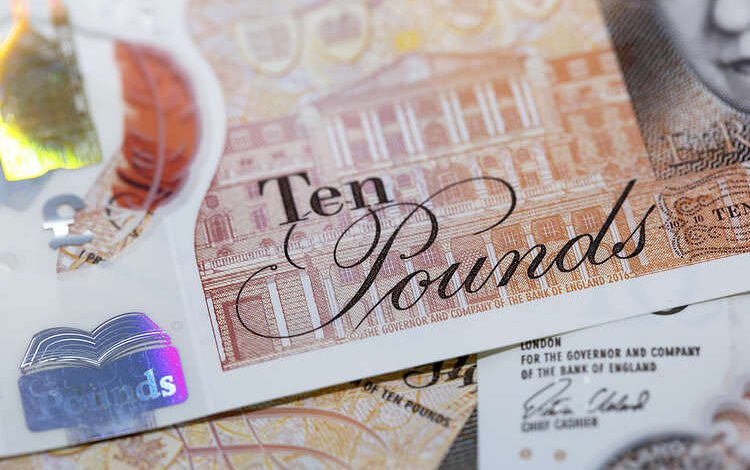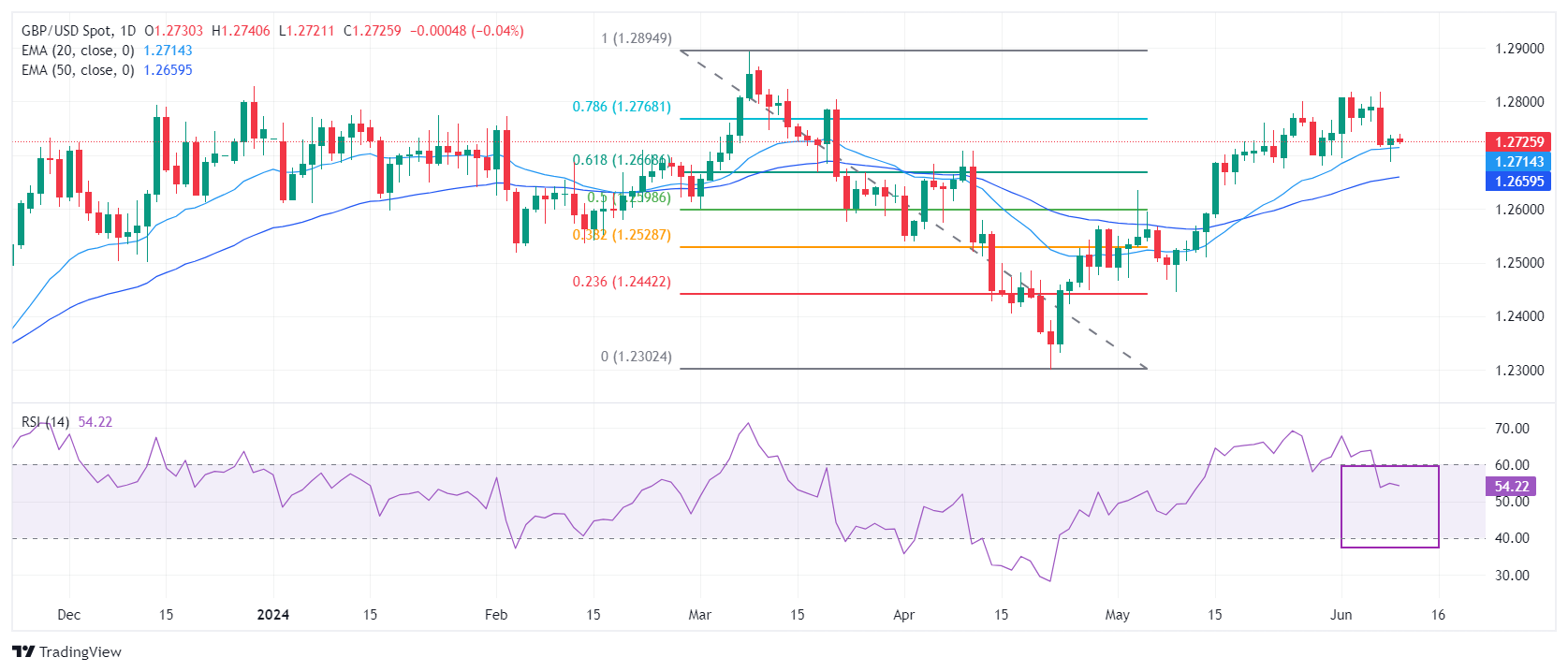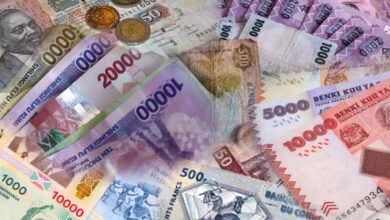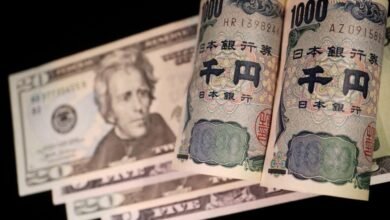Pound Sterling edges down due to weak UK Employment, uncertainty ahead of Fed decision

- The Pound Sterling declines from 1.2740 against the US Dollar due to weak UK employment data and a firm US Dollar.
- The BoE could struggle to shift toward policy normalization as steady UK wage growth offset the impact of weaker employment levels.
- Investors see the Fed arguing to maintain a restrictive framework for longer.
The Pound Sterling (GBP) falls back after facing selling pressure near 1.2740 in Tuesday’s London session. The GBP/USD pair weakens due to poor United Kingdom (UK) Employment data for three months through April and a firm US Dollar (USD) amid expectations that the Federal Reserve (Fed) will delay interest-rate cuts.
The UK Office for National Statistics (ONS) reported that the labor market recorded a drawdown for the fourth time in a row. Employment fell by 140,000 workers in the three months to April, less than the 177,000 decline in employment seen in the January-March period. The ILO Unemployment Rate rose to 4.4%, higher than the expected 4.3%. The labor market data indicates that firms struggle to bear the consequences of the Bank of England’s (BoE) higher interest rates.
Meanwhile, wage growth remained steady in the February-April period. Average Earnings Excluding Bonuses, which is a wage inflation measure, grew in line with estimates and the prior release of 6.0%. Also, Average Earnings Including bonuses grew steadily by 5.9%, upwardly revised from 5.7% and higher than the estimates of 5.7%. High wage growth could hamper the BoE’s move towards lowering interest rates.
Daily digest market movers: Pound Sterling weighed by weak labor market data
- The Pound Sterling faces selling pressure near 1.2740 after a short-lived pullback against the US Dollar. The US Dollar remains firm as investors turn cautious ahead of the United States (US) Consumer Price Index (CPI) data for May and the Federal Reserve’s interest rate decision, which are scheduled for Wednesday. The US Dollar Index (DXY), which tracks the Greenback’s value against six major currencies, consolidates after rising to almost monthly high near 105.40.
- Monthly headline inflation is expected to grow at a slower pace of 0.1% from 0.3% in April, with annual figures growing steadily by 3.4%. In the same period, the annual core CPI, which excludes volatile food and energy prices, is expected to have decelerated to 3.5% from the former release of 3.6%, with monthly figures maintaining the current growth rate of 0.3%.
- Steady or higher-than-expected inflation figures would force Fed policymakers to argue in favor of maintaining the current interest rate framework for a longer period. Soft figures, on the contrary, would reinforce their confidence that the progress in the disinflation process has not stalled.
- The major event for investors will be the Fed’s interest rate decision, in which officials are expected to keep rates on hold for the seventh straight time. Policymakers said they won’t lower rates until they get sufficient evidence that inflation will sustainably return to the desired rate of 2%. Investors will keenly focus on Fed Chair Jerome Powell’s press conference and the dot plot to get significant cues about the interest rate outlook.
- Currently, market speculation for Fed rate cuts for the entire year suggests that there will be only one rate cut this year, either in the November or December meeting. Meanwhile, investors’ expectations for the Fed reducing interest rates in the September meeting have diminished significantly.
Technical Analysis: Pound Sterling holds above 1.2700
The Pound Sterling finds an interim cushion near the round-level support of 1.2700 against the US Dollar. The GBP/USD pair continues to be well-supported by the 20-day Exponential Moving Average (EMA), which trades around 1.2714. Also, the 50-day EMA is loping higher, suggesting that the near-term trend is still upbeat.
The Cable still holds the 61.8% Fibonacci retracement support (plotted from the March 8 high of 1.2900 to the April 22 low at 1.2300) at 1.2665.
However, the 14-period Relative Strength Index (RSI) has shifted into the lower range of 40.00-60.00, suggesting that the momentum is losing strength.
Pound Sterling FAQs
The Pound Sterling (GBP) is the oldest currency in the world (886 AD) and the official currency of the United Kingdom. It is the fourth most traded unit for foreign exchange (FX) in the world, accounting for 12% of all transactions, averaging $630 billion a day, according to 2022 data. Its key trading pairs are GBP/USD, aka ‘Cable’, which accounts for 11% of FX, GBP/JPY, or the ‘Dragon’ as it is known by traders (3%), and EUR/GBP (2%). The Pound Sterling is issued by the Bank of England (BoE).
The single most important factor influencing the value of the Pound Sterling is monetary policy decided by the Bank of England. The BoE bases its decisions on whether it has achieved its primary goal of “price stability” – a steady inflation rate of around 2%. Its primary tool for achieving this is the adjustment of interest rates. When inflation is too high, the BoE will try to rein it in by raising interest rates, making it more expensive for people and businesses to access credit. This is generally positive for GBP, as higher interest rates make the UK a more attractive place for global investors to park their money. When inflation falls too low it is a sign economic growth is slowing. In this scenario, the BoE will consider lowering interest rates to cheapen credit so businesses will borrow more to invest in growth-generating projects.
Data releases gauge the health of the economy and can impact the value of the Pound Sterling. Indicators such as GDP, Manufacturing and Services PMIs, and employment can all influence the direction of the GBP. A strong economy is good for Sterling. Not only does it attract more foreign investment but it may encourage the BoE to put up interest rates, which will directly strengthen GBP. Otherwise, if economic data is weak, the Pound Sterling is likely to fall.
Another significant data release for the Pound Sterling is the Trade Balance. This indicator measures the difference between what a country earns from its exports and what it spends on imports over a given period. If a country produces highly sought-after exports, its currency will benefit purely from the extra demand created from foreign buyers seeking to purchase these goods. Therefore, a positive net Trade Balance strengthens a currency and vice versa for a negative balance.
Source link






